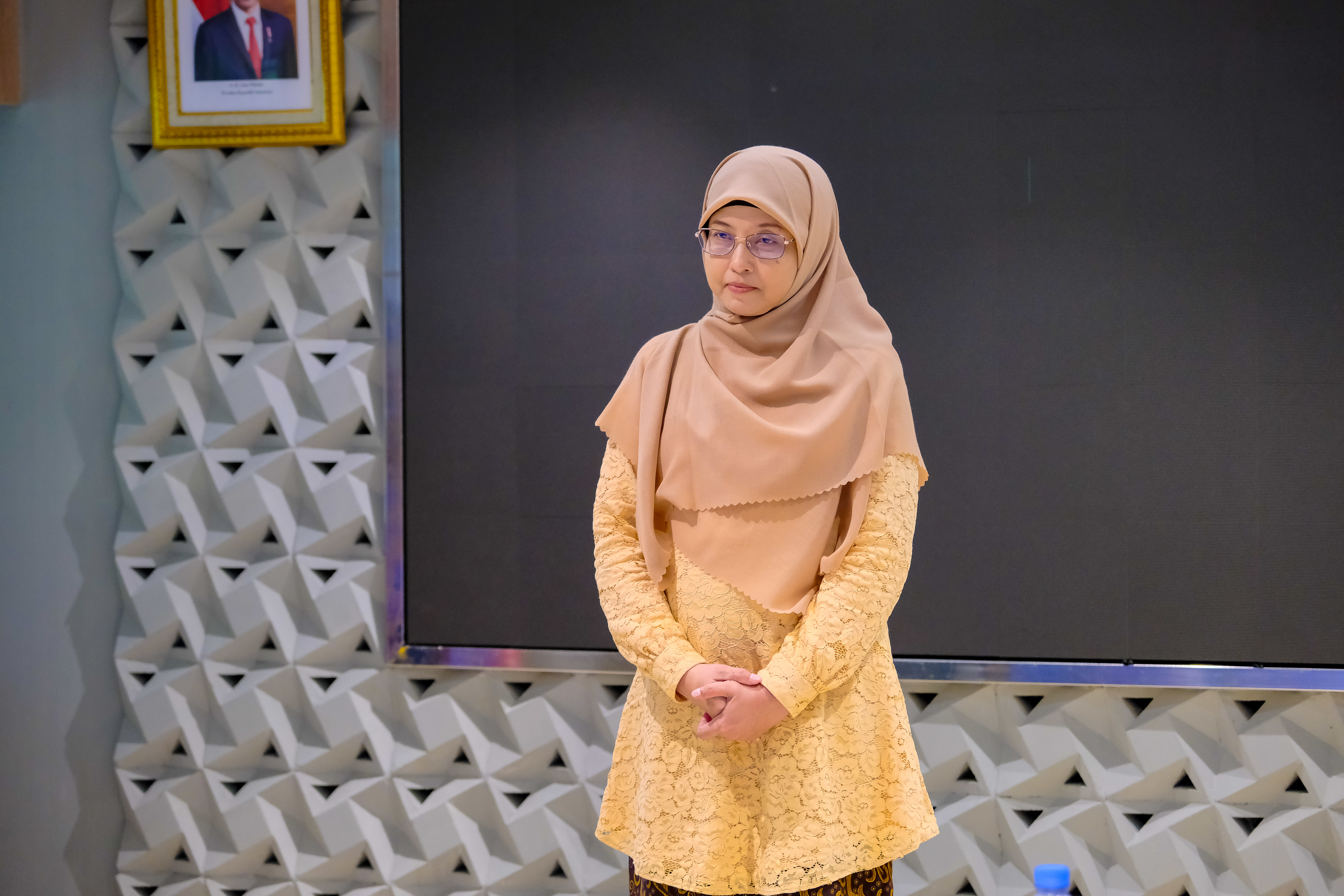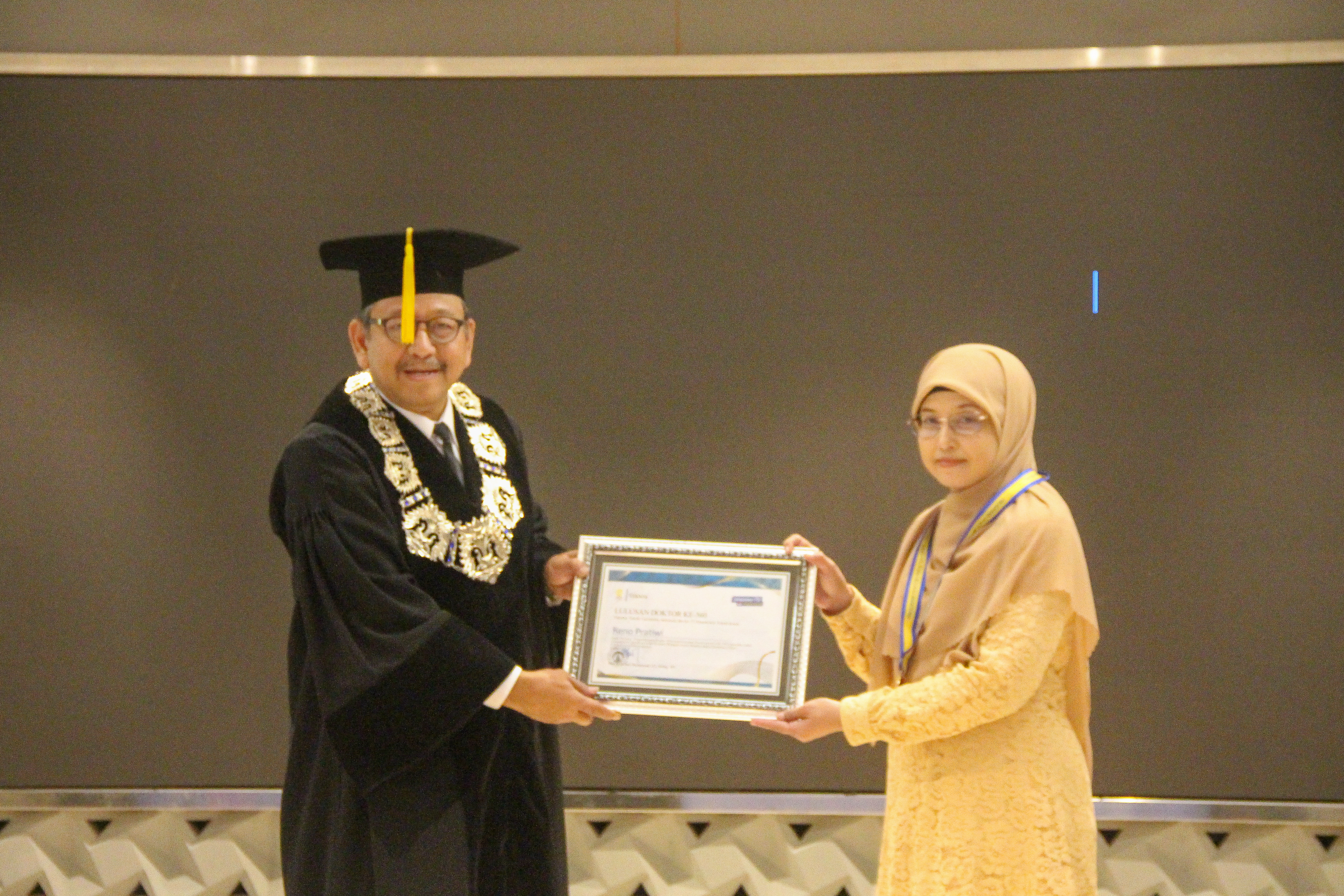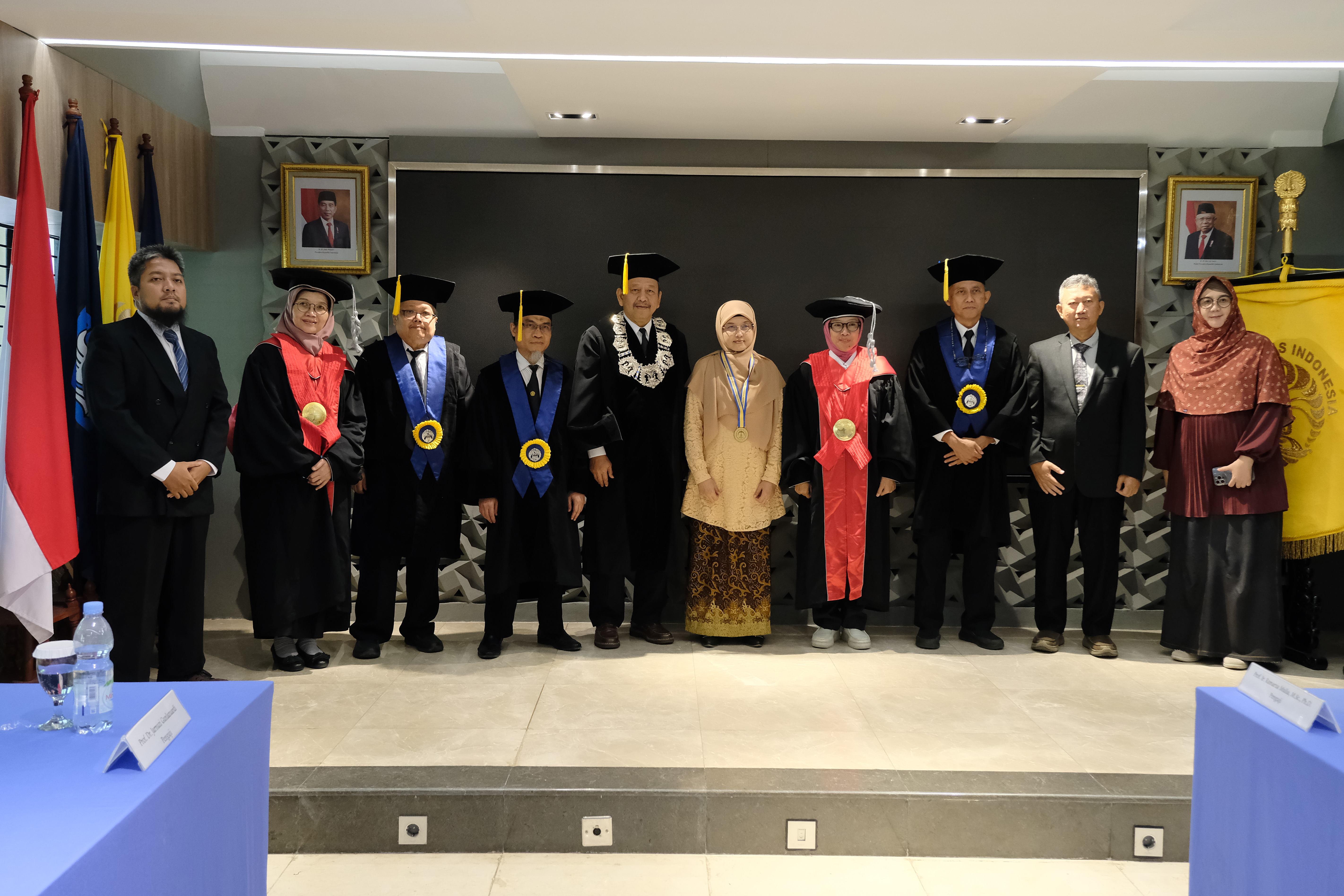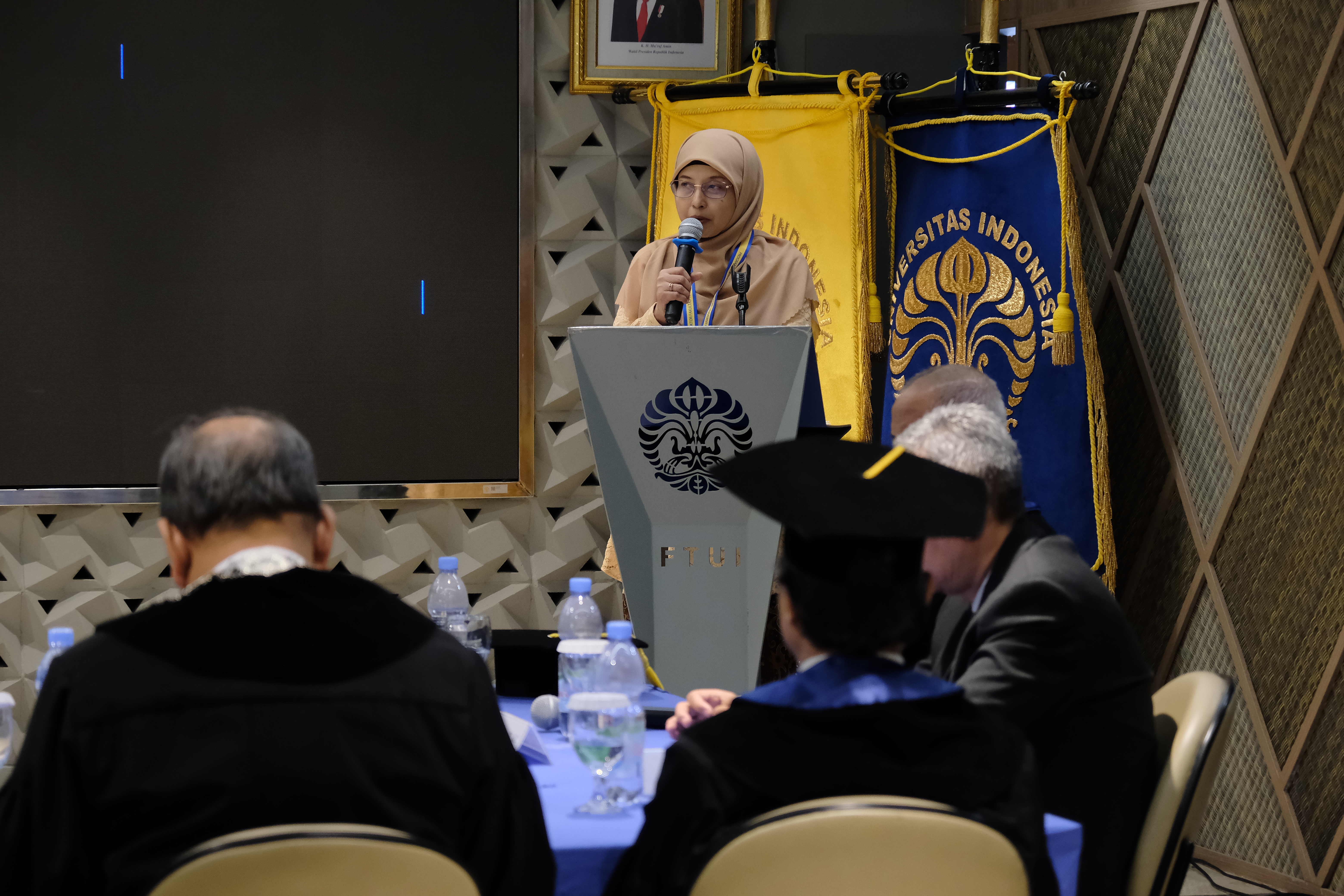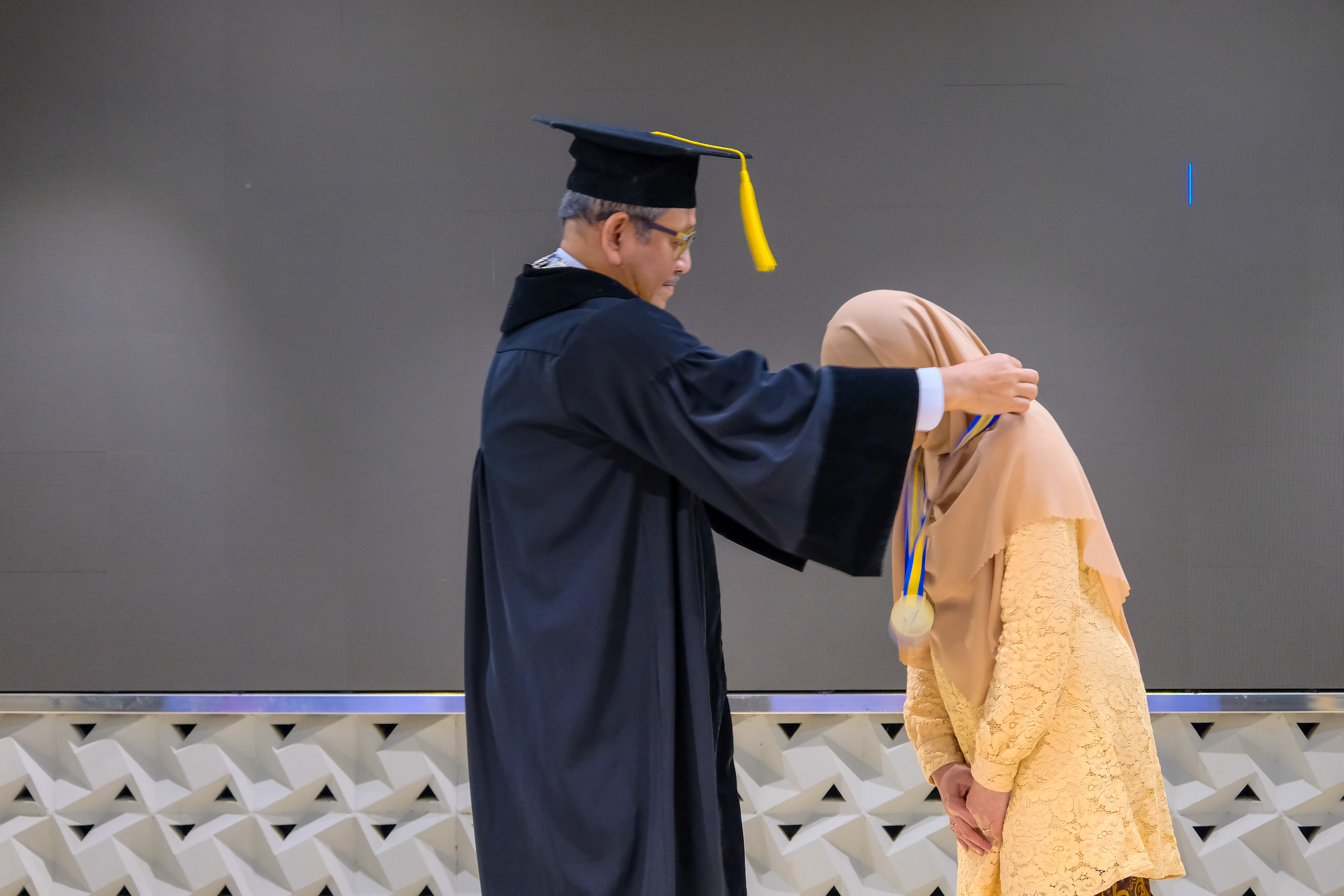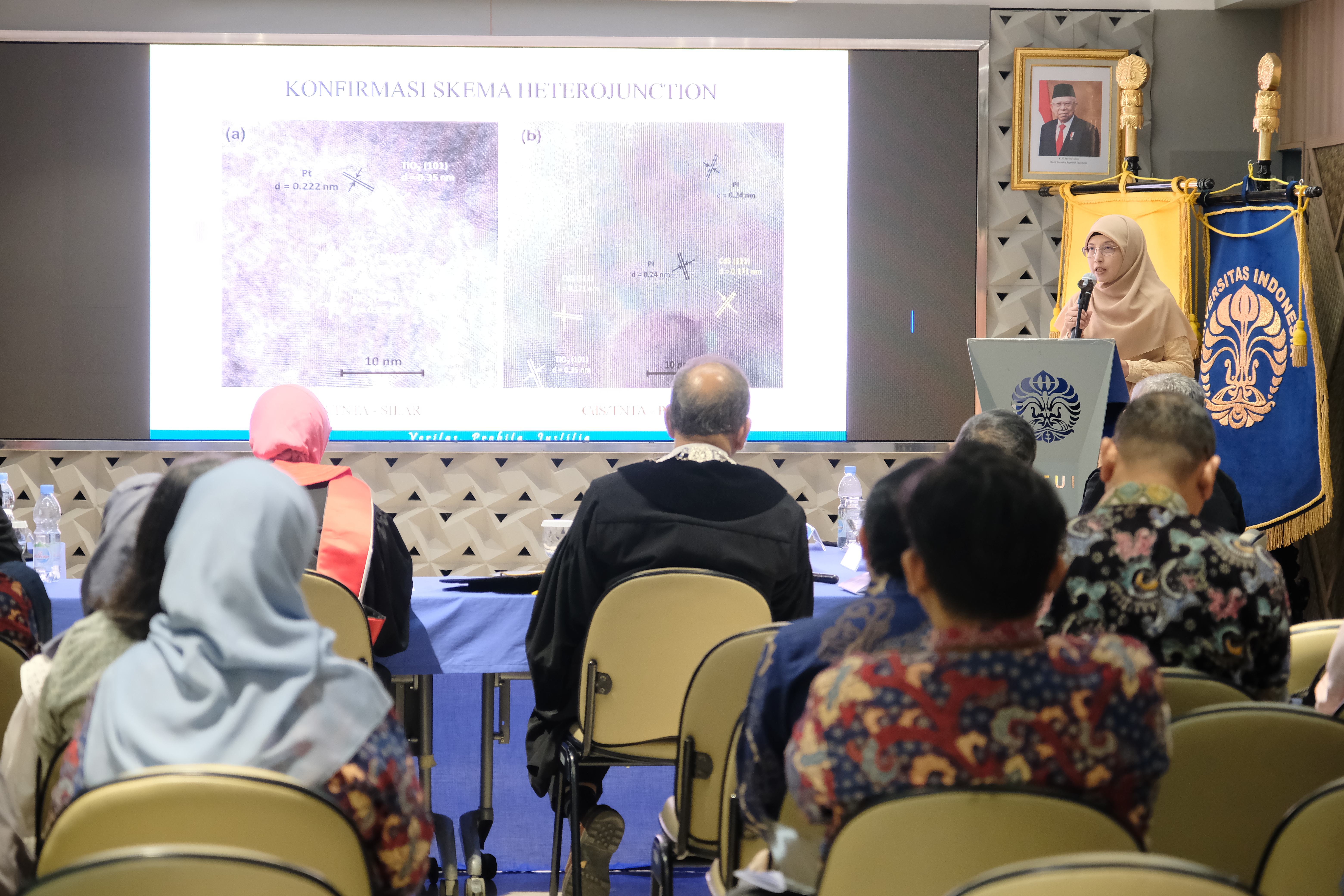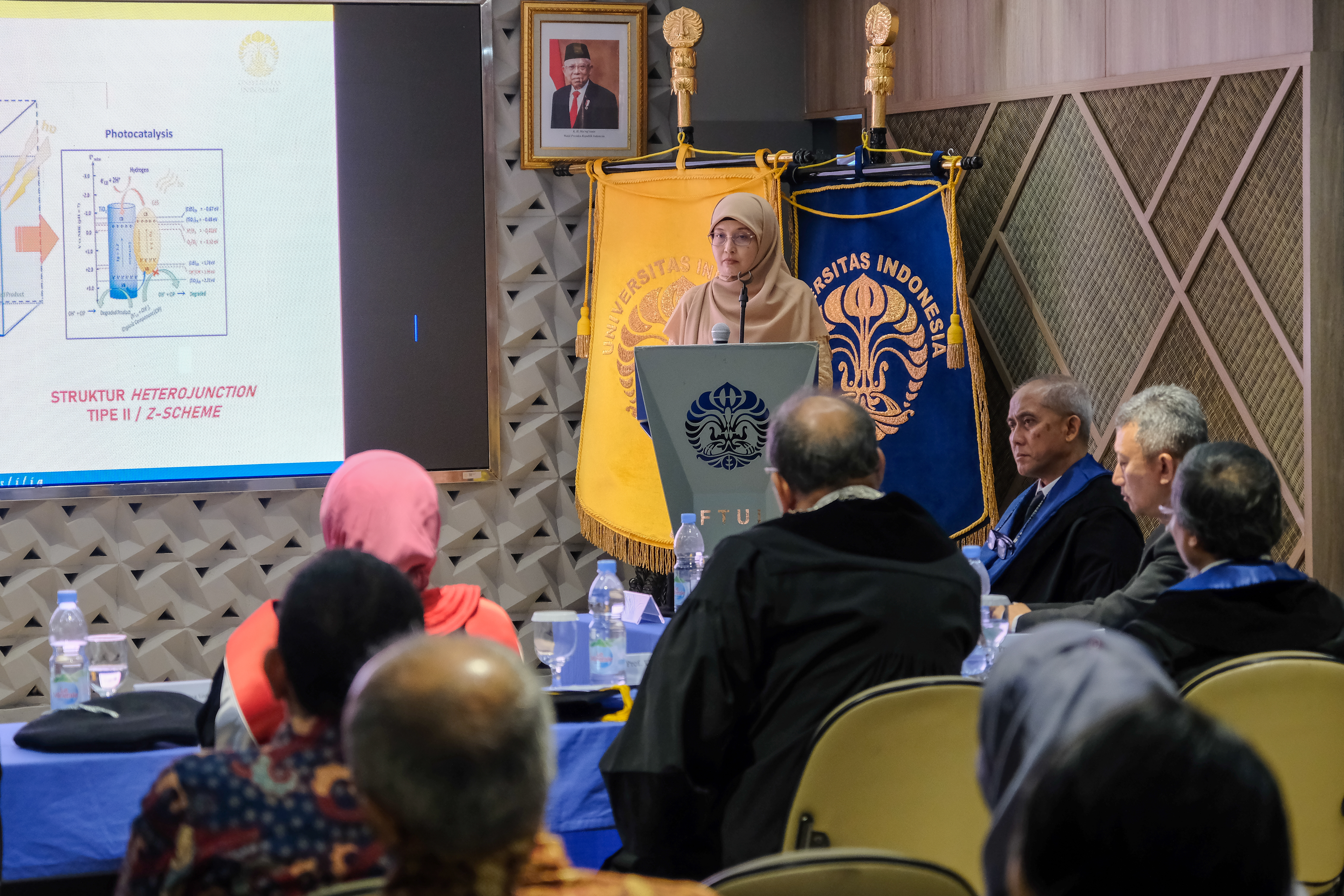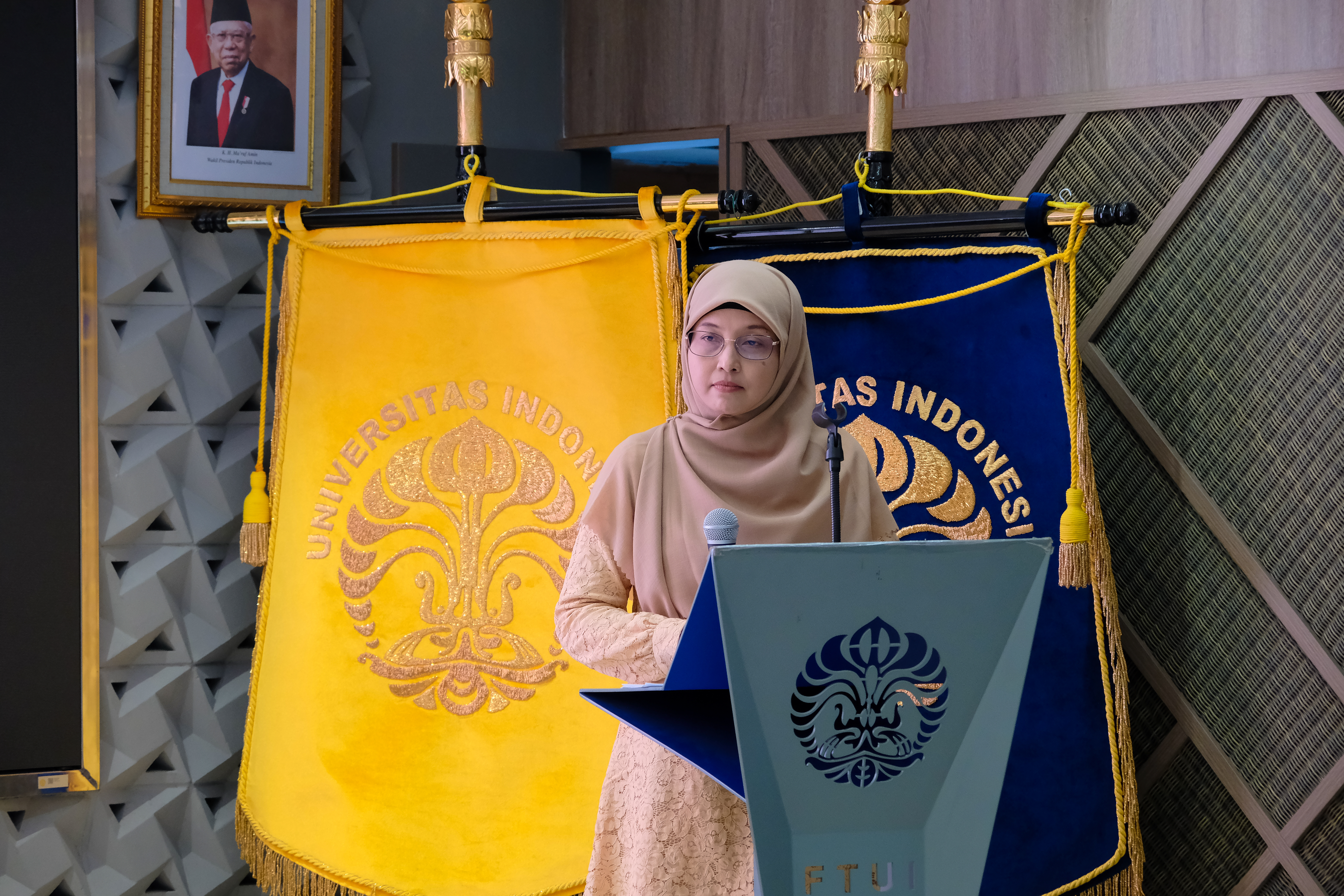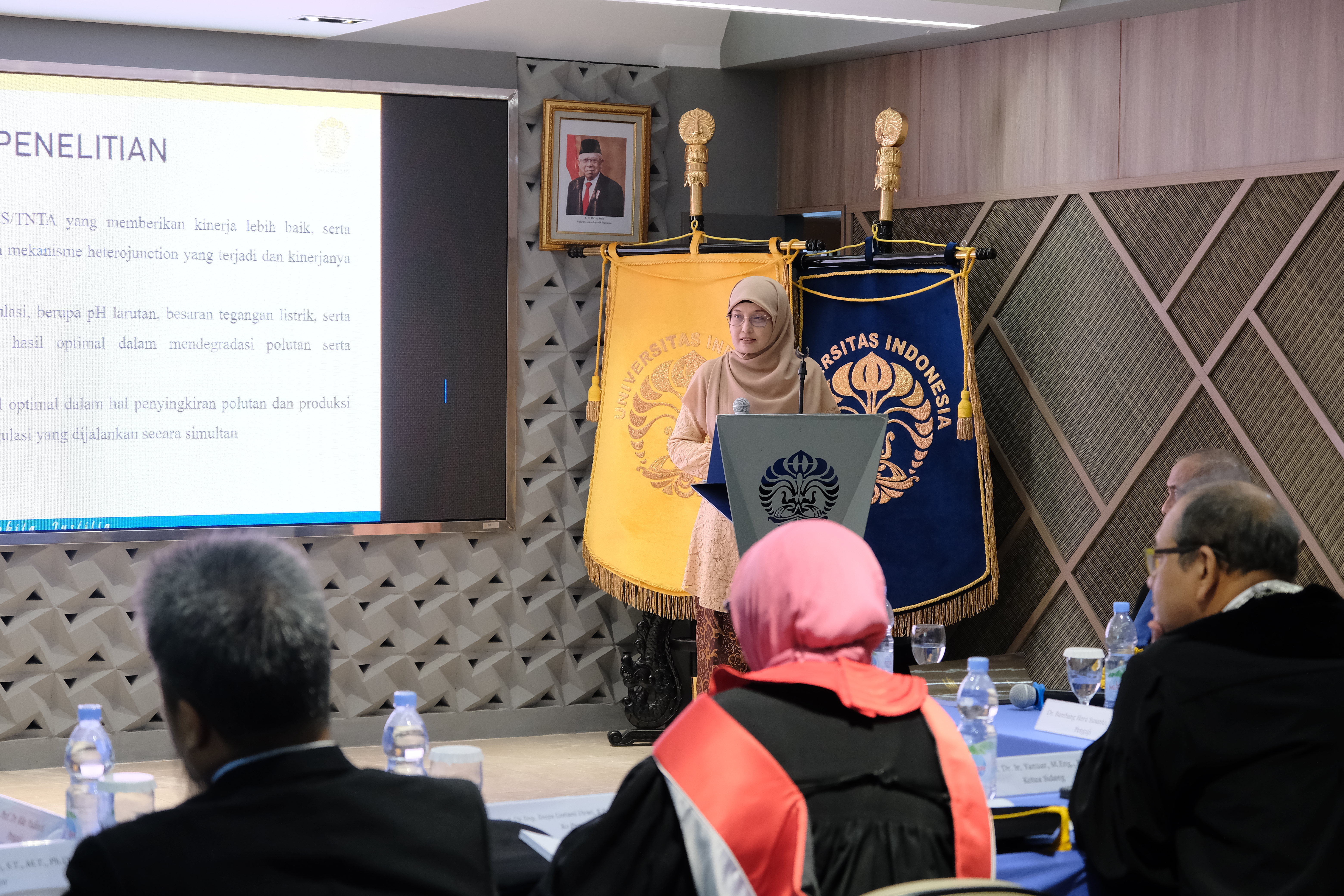The increasing demand for renewable energy and environmental pollution from poorly managed waste have become significant issues that remain unresolved. Hospitals, in particular, have become major contributors to wastewater. In developing countries, hospitals can produce 200-400L/capita/day of wastewater containing toxic, non-biodegradable, and infectious pollutants.
Retno Pratiwi, a doctoral student in Chemical Engineering at FTUI, sought the best alternative to address both problems. In her dissertation, Retno detailed research on combining photocatalysis and electrocoagulation processes to achieve optimal performance in removing dissolved pollutants while also producing hydrogen gas.
The dissertation, titled “Development of Heterojunction Structure on CdS/TiO2 Nanotube Arrays for Simultaneous Removal of Ciprofloxacin and Hydrogen Production through Photocatalysis-Electrocoagulation Combination,” was presented by Retno at her FTUI doctoral promotion open session on Friday (07/05) in the Smart Meeting Room, Dean’s Building, FTUI.
Retno Pratiwi successfully defended her dissertation and was awarded a Doctorate in Chemical Engineering with the highest distinction, Summa Cum Laude, and a GPA of 3.96. Retno Pratiwi is the 75th doctoral graduate of the Department of Chemical Engineering and the 560th doctoral graduate of FTUI.
“I conducted research to develop CdS/TNTA (Titania Nanotube Arrays) nanocomposites as an effort to improve photocatalyst performance in degrading Ciprofloxacin (CIP) liquid pollutants while simultaneously producing hydrogen gas. The heterojunction mechanism was developed through two synthetic methods, PAD (Photoassisted Deposition) and SILAR (Successive Ionic Layer on Adsorption Reaction),” explained Retno.
The synthesis results from each method were tested for their ability to process wastewater and produce hydrogen in a combined photocatalysis-electrocoagulation system. Combining electrocoagulation and photocatalysis processes, both of which can remove organic pollutants from wastewater while producing hydrogen gas, was hypothesized to improve process efficiency.
Retno Pratiwi’s research showed that NaCl as an electrolyte significantly impacts electrocoagulation performance, where using 0.0034N NaCl increased hydrogen yield and CIP removal by 143 mmol/m2 and 72%, respectively.
“A more significant performance improvement was obtained when simultaneous photocatalysis-electrocoagulation was conducted, achieving a hydrogen yield of 1372 mmol/m2 plate and CIP removal reaching 90%. This indicates that the combination of CdS/TNTA electrocoagulation and photocatalysis processes with Z-scheme heterojunction has a significant effect on hydrogen production and CIP removal,” stated Retno.
FTUI Dean Prof. Dr. Ir. Heri Hermansyah, S.T., M.Eng., IPU remarked, “The enhanced photocatalytic ability of the nanocomposite has paved the way for more effective and environmentally friendly methods to clean water from pollutants such as ciprofloxacin. Additionally, simultaneous hydrogen production offers an innovative solution to address the pressing energy crisis. Dr. Retno Pratiwi’s research is a promising breakthrough in addressing two environmental issues simultaneously—water pollution and energy shortages. The development of CdS/TNTA nanocomposites for degrading ciprofloxacin and producing hydrogen simultaneously shows tremendous potential in creating sustainable solutions for the future.”
The promotion session was led by Prof. Dr. Ir. Yanuar, M.Eng., M.Sc., with Prof. Dr. Ir. Slamet, ST., MT., as the promoter and co-promoters Prof. Dr. Eng. Eniya Listiani Dewi, B. Eng., M.Eng., IPU., and Muhammad Ibadurrohman S.T., M.T., Ph.D. The examiners included Prof. Dr. Rike Yudianti, Prof. Dr. Jarnuzi Gunlazuardi, Prof. Ir. Kamarza Mulia, M.Sc., Ph.D., and Dr. Bambang Heru Susanto, S.T., M.T.
***
Public Communications Office
Faculty of Engineering, Universitas Indonesia

